Understanding Camber, Caster, and Toe
Proper alignment goes a long way, whether you’re getting behind the wheel of a family sedan or a 4x4. When the camber, caster, and toe are properly aligned to your vehicle’s specifications, your vehicle’s tires meet the road exactly as intended. But when any of the three are out of alignment, it can affect your driving safety, including gas mileage and tire wear. Let’s take a look at camber, caster, and toe and what each of these alignment settings means for your trips across town and overall safety.
Camber Affects Tire Wear
The Camber is the inward and outward tilt of the tire and wheel assembly (viewed from the front of the vehicle). Each manufacturer sets a specific camber alignment for every vehicle it produces, which might be either positive, negative, or zero (0º).
When the camber is at the correct angle, the tire and wheel will roll straight. However, the camber can go out of alignment over time. When the top of the tire is leaning inward (toward the vehicle), it is a negative camber. Positive camber has the top of the tire tilting outward (away from the vehicle).
What does it mean when the camber is out of alignment?
Cornering performance is directly related to your vehicle's camber angle. However, the optimal camber angle varies depending on the vehicle you drive as well as manufacturer specifications for handling and tire wear. When the camber angle falls out of the intended range, your vehicle may not handle as the automaker intended. This can cause potential safety issues. It can also cause excessive tire wear, costing you money.
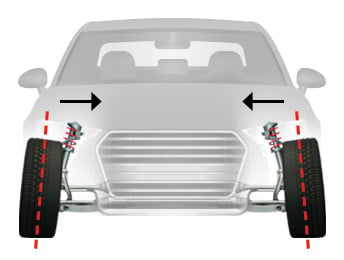
NEGATIVE CAMBER
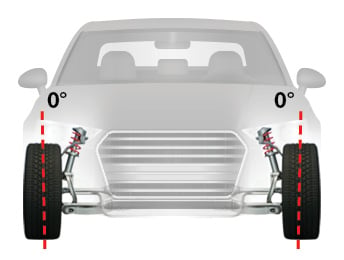
ZERO DEGREES = WHEEL IS VERTICAL
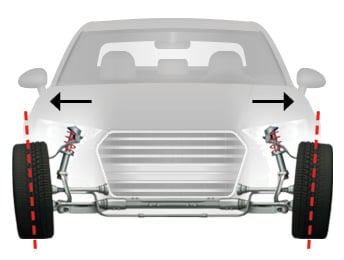
POSITIVE CAMBER
Toe is the Most Important Angle for Tire Life
When the toe is properly calibrated, all four tire/wheel assemblies will be pointing in the same, forward direction. The goal is to achieve a zero toe. A slightly positive or negative toe may be okay, depending on manufacturer specifications. A properly aligned toe leads to less friction between your tires and the road, and a smoother, safer ride.
What does it mean when the toe is out of alignment?
A toe that is out of alignment can cause excessive tire wear, stress on other parts of your vehicle, and less fuel efficiency. It can also reduce your safety on the road. Why? Because tires and wheel assemblies that are facing away from each other (toe-out) or toward each other (toe-in), are slightly skidding on the road surface.
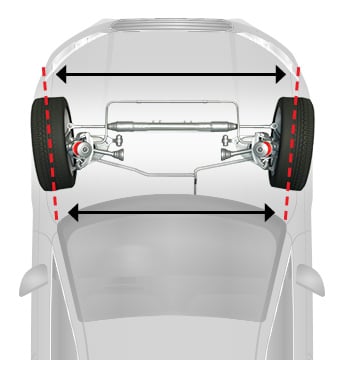
NEGATIVE = TOE OUT
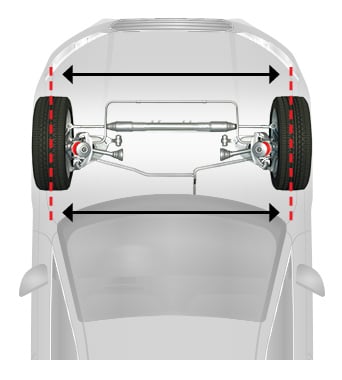
ZERO TOE
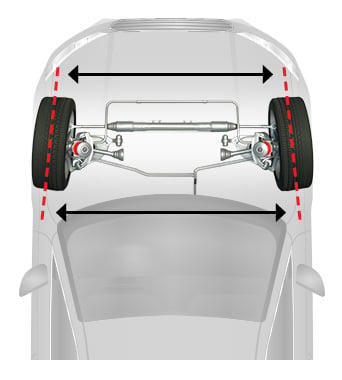
POSITIVE = TOE IN
Caster Affects Steering and Handling
After looking at your vehicle’s camber and toe, we also inspect the caster. When you come to Les Schwab, we’ll check the caster angle in your vehicle alignment, and adjust it to match manufacturer specifications on vehicles that require it. Additionally, we’ll take a look at your vehicle’s thrust angle (a measurement to ensure the frame or subframe of the vehicle are in line with the wheels).
What does it mean when the caster is out of alignment?
Most modern vehicles run a certain amount of positive caster with the steering axis tilted rearward toward the driver. The steering axis is the imaginary vertical line that runs through the center of the tire and wheel assembly from the ground toward the steering wheel or away from it. (A Negative caster has an axis tilted toward the front of the vehicle. A zero or neutral caster has a steering axis line that is straight up and down. And if the axis is tilted toward the driver, it is a positive caster.) While caster doesn’t affect tire wear like camber, it does have an impact on steering and handling.
Overall, the caster is the negative, neutral, or positive slope of your steering axis. To give you the best handling, rarely will vehicle specifications call for a negative or zero caster. Specific caster angles for the year, make, and model of your vehicle have been established to ensure your safety. Les Schwab has the expertise to get yours done right the first time.
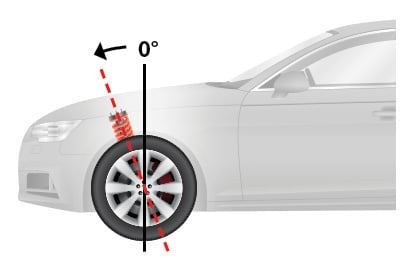
NEGATIVE CASTER = STEERING AXIS TILTED FORWARD
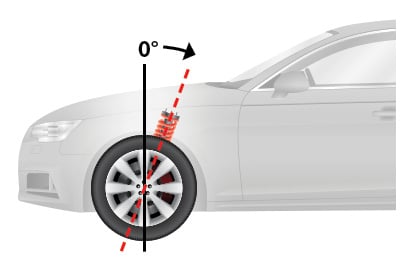
POSITIVE CASTER = STEERING AXIS TILTED REARWARD
Les Schwab Does Alignments
At Les Schwab, we’re here to help you get the most out of your tires. If you haven’t had your alignment checked in a while, or you suspect an issue, stop by any of our stores for a free visual inspection. If you do need a full alignment service, we’ll show you what it will cost to get your camber, caster, and toe back within your manufacturer’s specifications for prolonged tire life, improved safety and handling, and increased fuel economy.
Schedule An AlignmentWhat you need to know
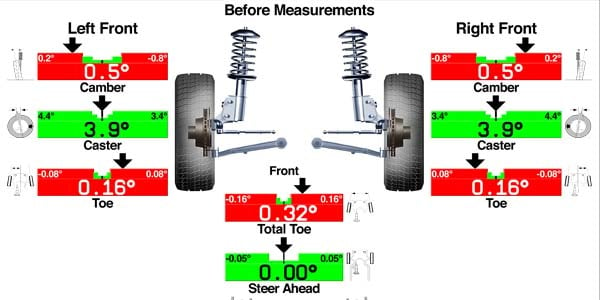
Do I Really Need an Alignment for My Vehicle?
Don’t assume that drift to the right means you need an alignment. Sometimes symptoms of bad alignment are about road conditions, suspension parts or other factors.
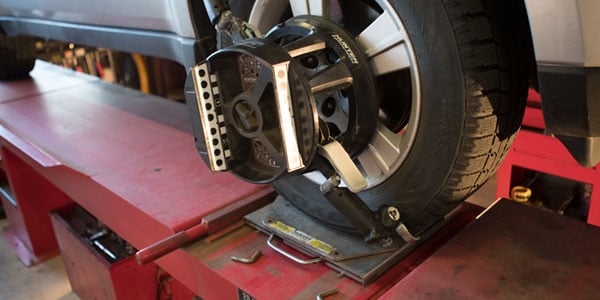
Wheel Alignment FAQ
It’s important to get wheel and tire alignments regularly. Find out why and get answers to your other alignment questions here.

What’s the Difference Between a Two-Wheel and Four-Wheel Alignment?
Discover the distinction between a two wheel and four wheel alignment at Les Schwab. Get expert advice and ensure optimal vehicle performance.

